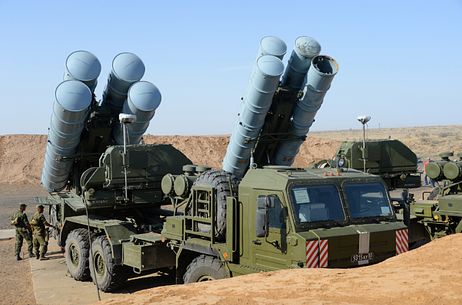Arrival of the S-400 air defense system (ADS) is being marked with festive celebrations in India with the media tagging the system as a game-changing technology. Their excitement can be felt from the fact that the S-400 is being called ‘The Brahmastra’ – a formidable and divine weapon of the first Hindu God. The narrative being marketed by the regime is that acquisition of this system will turn the tables in India’s favor in any potential conflict, particularly with Pakistan. Despite such amplified assertions, the hype created by this system is considerably exaggerated.
First, the sense of security provided by the S-400 is absurd in itself. New Delhi claims that the S-400 will endow her with the capability to control Pakistani airspace and avert any sort of aerial attack. Realistically, even with all five systems, the entire Indian territory cannot be protected. Additionally, no technology can claim to be 100 percent invincible, not even the S-400. In fact, the arrival of a new technology often has a destabilizing impact on the region; and with the passage of time, adversaries are always able to find and detect chinks in the armour, as they say.
Like other systems, this system can be countered through kinetic as well as non-kinetic means. For example, it can be neutralized by saturation techniques. In this regard, decoys or numerous aerial assets can be employed to saturate (or overwhelm) its intercepting capability by sending more targets than the system can handle. Resultantly, some of the targets are likely to avoid interception by the ADS. Multiple Independently-targetable Reentry Vehicles (MIRVs) have the potential to saturate such systems. These technologies can be reinforced to address the threat from ADS. Aerial assets, which can fly at lower heights, can avoid being detected by ADS radars. Cruise missiles, which have a terrain-hugging trajectory, can also prove useful in this regard. Low flying tactics can also be refined to counter this threat.
Emerging technologies such as Unmanned Aerial Vehicles (UAVs) have also emerged as valuable assets against the ADS. In 2020, the vulnerabilities of Russian air defenses were exposed in Armenia, Libya, and Syria where they became easy targets of UAVs. Drone swarming technology can also be used for this purpose.
In the Nagorno-Karabakh incident, Azerbaijan used decoy targets against Armenia which were shot down by the latter’s ADS, ultimately revealing their position. Subsequently, Turkish drones were employed to destroy them allowing the Azerbaijan defense forces to proceed further into Armenian territory. In May 2020, Bayraktar (Turkish medium-altitude long-endurance (MALE) unmanned combat aerial vehicles (UCAVs) were employed by the Libyan Army to attack the Russian ADS in territories which were under the control of Khalifa Haftar. The ADS became an easy target of the UCAVs paving way for the Libyan Army to recapture occupied territories. Similar events were witnessed in Syria where Israel used armed UAVs against Russian AD systems present in the country. These examples show that improvements in UAV technology are likely to increase the vulnerability of advanced air defense systems.
Kinetic means are not the only way to counter ADS, they can also be dealt with by non-kinetic measures. Both active and passive electronic countermeasures can be employed to jam the radars of the S-400. Last year, the S-300 systems deployed in Syria were unable to detect Israeli cruise missiles due to the employment of electronic warfare techniques against them.
Second, technology adaptation takes time. The S-400 may have been acquired by India, but its impact will not be immediate. It will take considerable time before it can be operationalized in accordance with Indian ambitions. In addition, interoperability issues will also be one of the major hurdles for the Indian Armed Forces. The S-400 has to be integrated with other Indian weaponry. India maintains an arsenal where it has acquired arms from different countries such as France, United States, Israel, and Russia etc. Integrating systems of different origin is a difficult task and will impact the military strategy over the potential use of S-400.
The purpose of building up these arguments is to emphasize that the hype around the S-400 is being considerably overplayed by India, most likely for domestic reasons. Like it has done so in the past, the Pakistan Air Force (PAF) will develop innovative strategies, better training programs and employment of emerging technologies to address this threat. Till then, Pakistan’s forward-looking Armed Forces are capable of dealing with any adversary’s dangerous plans.
Shaza Arif is a Researcher at the Centre for Aerospace & Security Studies (CASS), Islamabad, Pakistan. The article was first published in Khaleej Mag. She can be reached at [email protected]
Image Source:Gady, Franz Stephan. Senior US Official: No Blanket Waiver for India on S-400. The Diplomat. January 10, 2020.https://thediplomat.com/2020/01/senior-us-official-no-blanket-waiver-for-india-on-s-400-buy/





